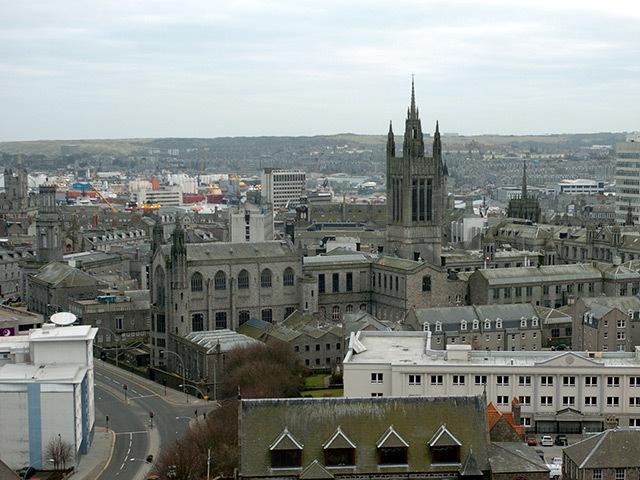
It is hard to believe that the North Sea oil & gas industry has been a part of the Aberdeen and north-east Scottish economy for half a century.
From early tentative beginnings starting with Shell renting yard space in Torry and offices on Market Street it has become the linchpin and more besides for this city-region.
Take oil out of the equation and our economy would collapse. There is no obvious sunrise successor, though maritime renewables could be made to work, if the oil & gas supply chain goes after the opportunity and Donald Trump is trumped over the European Offshore Wind Deployment Centre project.
But really grabbing that opportunity is something it has been poor at, despite the efforts of Aberdeen Renewable Energy Group and the launching at the turn of the millennium of what became the very successful All-Energy show, but which was last year swiped by Glasgow in a manner that angers me still.
Today, we have an economy that is far narrower than in the 1960s. That makes it singularly vulnerable, as has been graphically demonstrated three times over so far . . . the ’86 crash, the late 1997 through 1999 slump and the current “correction” as it is euphemistically labelled. I don’t count the 2009 nosedive as it was short-lived and the industry seemed to just blink and deal with it.
Aberdeen has done well out of North Sea oil, but in some ways it hasn’t. Ironically, it has been starved of central funding in a way that its peers have not; the presumption presumably being that the Granite City is rolling in money, which is questionable.
Yes, there are super-rich postcodes . . . especially around Rubislaw and up the North Deeside Road; but there are also large areas of deep poverty . . . deprivation; like Mastrick for example.
The city centre is down at heel . . . a disgrace compared with the douce “West End” with its grand granite mansions, now mostly offices, and streets of modest but well-appointed town houses.
Like many of you who I hope will enjoy this special edition of Energy marking 50 years of Aberdeen and the North Sea, I can remember the one-time “Silver City by the Golden Sands” in its pre-oil days.
It was the first city I ever lived in; moreover, I had arrived in the city from the sunny North Island of New Zealand. Believe me, Aberdeen was a shock to my young system at the time, especially the miserably cold winters with ice rime on the inside of my bedroom window. Even if I had been born in Cumbria!
My memories are photographic. Aberdeen might have been a small provincial city, but at least there was a civic and popular pride that is largely missing today.
Union Street, which I frequently traversed slip-streaming green and cream ‘Corporation’ buses on my bike, was cared for. Shop keepers even washed the sidewalks out front; Union Terrace Gardens was a popular oasis. There were green grocers too!!
Half a century later and Union Street . . . the Granite Mile . . . is an unkempt gutter of a place, by and large. Faceless property companies own many of the properties and pride is a very scarce commodity. Green grocers are history.
Which is ironic really. All that wealth that has passed through Aberdeen; how come hardly any of it rubbed off in the form of deep, uncompromising pride?
About 15 years ago at a dinner in the Town House, I remember Steve Remp, then chairman of the Ramco Group, threatening to pull out unless something concrete was done to straighten out the city centre.
Little or nothing happened, nor did Remp leave.
There are plenty of millionaires in and around the town; indeed the Wood family are listed as billionaires. Not bad for a family that once owned trawlers and gutted and filleted fish.
OK, Ian Wood did offer £50million towards a complete reconstruction of Union Terrace Gardens but with little apparent regard for its intrinsic heritage. The project got bogged down in controversy and there it remains.
It is perhaps worth reflecting that it was ship building, shipping and fishing money that largely built the mansions of Albyn and streets around during the 19th and early 20th centuries; but the oil era has manifestly failed in that regard.
Sadly, in a few decades the North Sea legacy could turn out to be vast, semi-derelict business parks and industrial estates, far too many mass-built four and five-bedroomed family execu-hovels for the core population, and rusting, cheaply thrown together retail sheds of the kind that blight many a town around Britain and which precipitated the demise of classic shopping streets, of which Union Street was once one.
However, as the saying goes, hope springs eternal.
The North Sea is mature yet there are very substantial remaining reserves, plus there are geological plays that no one has bothered about or barely touched . . . like tight gas; like fractured basement resources.
With the right fiscal regime, central government policies and incentives, and a vigorous mix of adventurous oil & gas companies partnered by a switched-on supply chain, the North Sea could easily buzz for another 50 years.
And if Aberdeen can be grown further as a global energy hub, including properly grasping the maritime renewables opportunity, then the future could in fact be very bright
